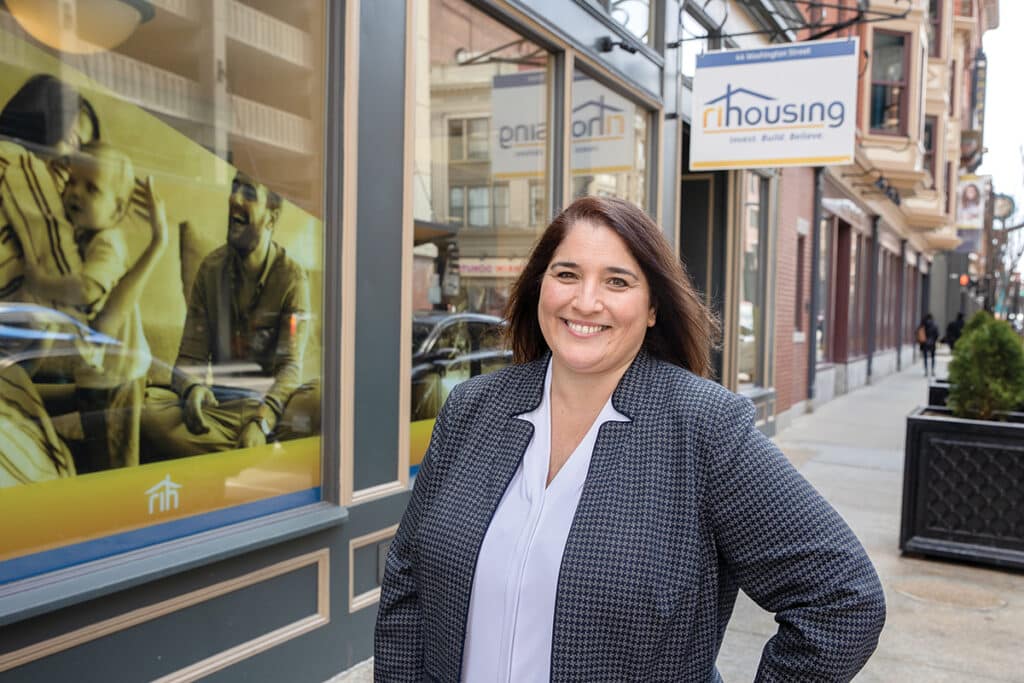Risk-Sharing Initiative Extended Indefinitely
FFB/FHA Risk-Sharing Program Adds Federal Muscle to Local Deals

By Abram Mamet
8 min read
Earlier this year, federal officials announced that the Federal Housing Administration (FHA)’s Risk-Sharing Initiative would be extended indefinitely, strengthening a resource that has become increasingly vital in recent years for State Housing Finance Agencies (HFAs).
The program was originally put in place in 1992 to allow qualifying state HFAs to originate and underwrite a myriad of affordable housing loans—including those for new construction, substantial rehab, refinancing and senior housing—with full FHA mortgage insurance that subsequently enhances HFA bonds to investment grade.

This insurance authority was previously limited to National Housing Act deals, meaning that “efficient lending for affordable housing developments was really not available,” says Garth Rieman, director of housing advocacy and strategic initiatives at the National Council of State Housing Agencies (NCSHA). Prior to the Risk-Sharing Initiative, Rieman says, “FHA multifamily insurance was pretty bogged down and slow, and a number of people thought that if we wanted to develop affordable rental housing more effectively, it needed a more efficient financing stream.”
By enhancing the bonds with the backing of the FHA’s insurance authority, the Risk-Sharing program indeed made the financing stream more efficient, and since 2001, the program has generated 1,771 loans, totaling nearly $18.7 billion in principal and supporting more than 210,247 affordable rental homes, according to data collected by HUD.
Though it was successful in its early years, the program eventually fell into disuse, says Rieman, due to several factors, such as rate compression from lower interest rates, a decay in the comparative value of tax-exempt bonds and less appetite from investors even for these enhanced mortgage deals. To bolster the program, many stakeholders—particularly the New York City Housing Development Corporation—advocated for authorizing the Federal Financing Bank (FFB) to provide capital financing for FHA-insured mortgages generated using the Risk-Sharing program, with the idea that the FFB would be able to provide competitive interest rates with more flexibility than private lenders, further stimulating the construction of affordable housing through the Risk-Sharing Initiative.
FFB Breathes New Life into Risk-Sharing Initiative
In 2015, HUD formally enlisted the FFB to provide capital for the participating HFAs, which gave Risk-Sharing deals the same solid, reliable and efficient financing enjoyed by the wider federal government.“That worked kind of perfectly to revive the Risk-Sharing program,” says Rieman. The FFB’s involvement “allows for more competitive rates and smaller deals to go forward that might not even be feasible without a financing mechanism like the FFB.”
However, the FFB’s involvement with the Risk-Sharing Initiative was authorized on a temporary basis, and in 2018, the program lapsed after the Trump administration decided not to re-authorize the added investment authority. This left many state HFAs in the lurch and stalled several projects that were reliant upon the FFB’s favorable interest rates.

“We were scrambling to look for other sources” of capital, says Kara LaChapelle, chief financial officer of Rhode Island’s HFA, RIHousing. The lapse in FFB funding “definitely slowed down our production.”
Also, the inability of RIHousing to generate the efficient mortgages they expected caused developers to look elsewhere, driving deals into the private market through a bank or another private lender. “The problem with that,” LaChapelle notes, “is that you lose touch with the tenants in that development. Those tenants benefit from the HFA being involved as the lender. We’re more hands-on, and we monitor those developments regularly to make sure that they’re financially sound and that they’re meeting all HUD requirements.”
In 2021, the FFB’s loan authority was reauthorized, and market activity once again picked up steam. However, that authority was given again temporarily, and many HFAs felt uncertain over whether the program would continue, dissuading the many holdouts from undertaking the relatively administrative-intensive qualification process to gain approval to participate in the Risk-Sharing Initiative.
Now that federal officials have announced an indefinite extension of the FFB’s loan authority with the Risk-Sharing program, that uncertainty has disappeared, and Rieman expects “a significant amount of activity in the months and years to come.”
Though the program has been effective, thus far it has generally been limited to preservation and rehabilitation deals. Though these deals are a critical component of affordable housing, allowing the maintenance of properties and their extended affordability, they are only one piece of the puzzle for HFAs trying to address the whole scope of their local housing crises.
Rieman attributes this limitation to the lack of a forward commitment ability within the current structure of the Risk-Sharing program. Because of that missing piece, the program simply does not “work as effectively for new construction as it could,” since the forward commitment component is the key to the majority of new construction mortgages.
Despite this limitation, the FFB’s involvement in the Risk-Sharing Initiative has still been excellent at generating efficient financing for desperately needed affordable housing projects across the country. “The track record shows that when the FFB is active, the Risk-Sharing program has been robust, active and valuable,” Rieman says. The numbers support this: in Fiscal Year 2023 alone, the Risk-Sharing Initiative helped support over 8,500 rental homes countrywide by generating 83 loans worth a total of over $1 billion.
RIHousing: A Case Study in Risk-Sharing Effectiveness
One of the more active participants in the Risk-Sharing Initiative is the state of Rhode Island, which got involved in the program in 1994, just two years after its inception. From the outset, LaChapelle says, RIHousing recognized that the enhanced bond ratings from the FHA insurance were an efficient way to add reliable value.
That value increased tremendously once the FFB loans were integrated into the program. “The rates on the FFB programs are much more advantageous than what we could offer a customer traditionally,” says LaChapelle. “Traditionally, we are issuing bonds – in this case, taxable bonds. And the rates on those bonds are significantly higher than those FFB rates. Right now, it is higher by probably 1.7 percent, which can be significant on those large multi-million-dollar deals.”
LaChapelle says that in their time participating in the program, RIHousing has done $319 million worth of deals over 31 projects, resulting in 3,200 new or preserved affordable housing units. “That’s significant for Rhode Island,” she says, pointing to its position as a state with high housing costs and a relatively elderly population compared to the rest of the country.
The benefits of the Risk-Sharing program are not necessarily unique to Rhode Island, says LaChapelle. “I feel like the Risk-Sharing program could work in other environments. It’s just that upfront effort that is needed to get involved. And it’s also working with your developers so that they understand what the requirements are. They’re similar requirements to what developers are already doing to make the units affordable, but there are some nuances in terms of paperwork and timing.”
RIHousing has primarily engaged with the Risk-Sharing program as a preservation tool, particularly for well-built but aging housing constructed using the Low Income Housing Tax Credit. “We’ve got many developments that were initially built 20 or 30 years ago, and they need a little bit of help but don’t need massive construction. This program works well for that.” LaChapelle says by updating those units with whatever rehab is needed, RIHousing is generally able to extend the affordability of those units for another 30 or 40 years, depending on the particularities of each deal.
As deals continue to get tighter, RIHousing has increasingly found value in using the Risk-Sharing program to help build new construction as well. One of those projects is West House II, a senior housing development in the beachside town of Middletown, RI. The development, an addition to an existing senior housing project called West House I, would effectively double the town’s stock of affordable housing units available to seniors.

“This particular project has a smaller first mortgage and is not as large as some of our other ones,” says LaChapelle. “The total development cost is about $15 million. Once the construction is done, then we will be issuing the Risk-Share FFB loan, and that would be about $2.5 million.” Though the development is supported by LIHTC equity, the Risk-Sharing program was critical in funding the development, says LaChapelle, allowing for an additional $1.3 million of savings in interest costs between what the FFB loan was able to offer vs. a traditional taxable interest rate.
Though today’s interest rate environment is relatively high, LaChapelle says that the FFB loans provide significant savings even when private interest rates are lower. “The spread hasn’t always been quite as large as it is today, and sometimes has been 1 or 1.1 percent, but it’s always significant enough to make a difference in these deals.”